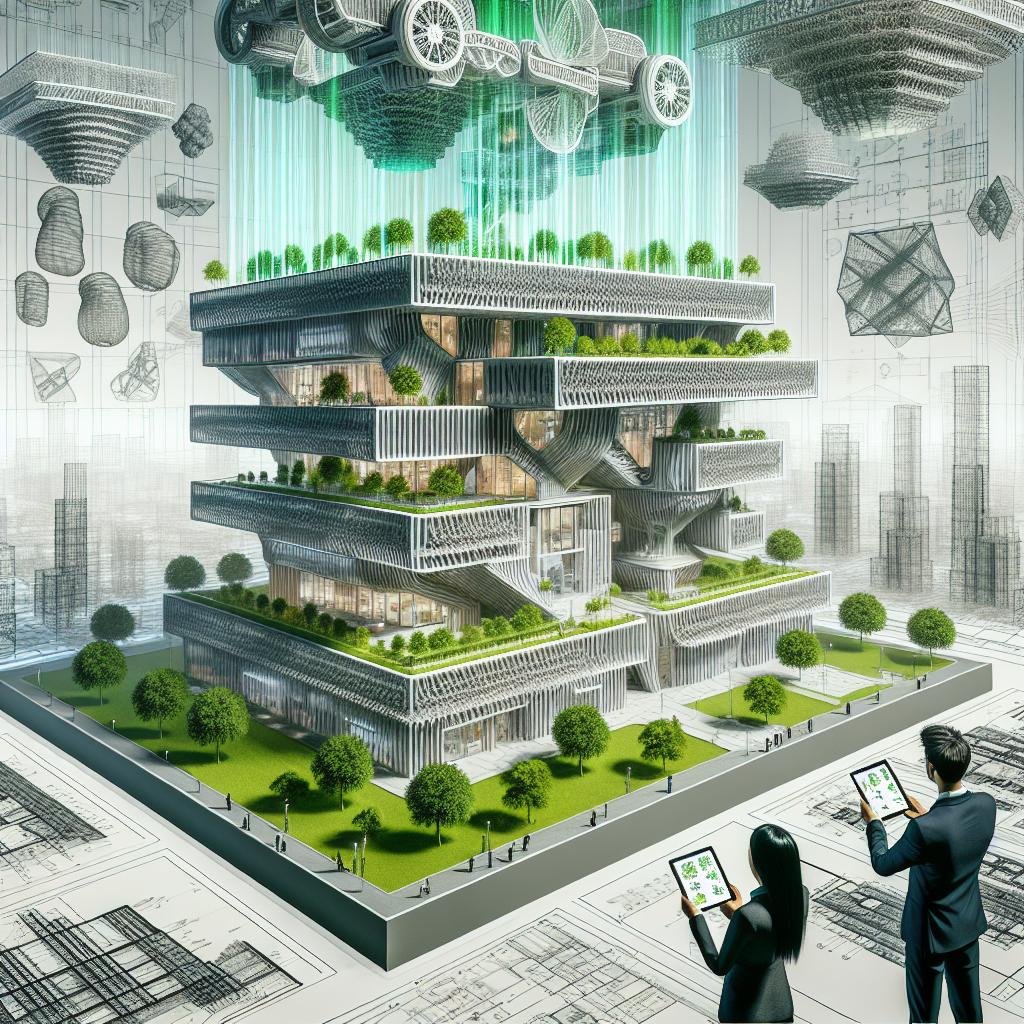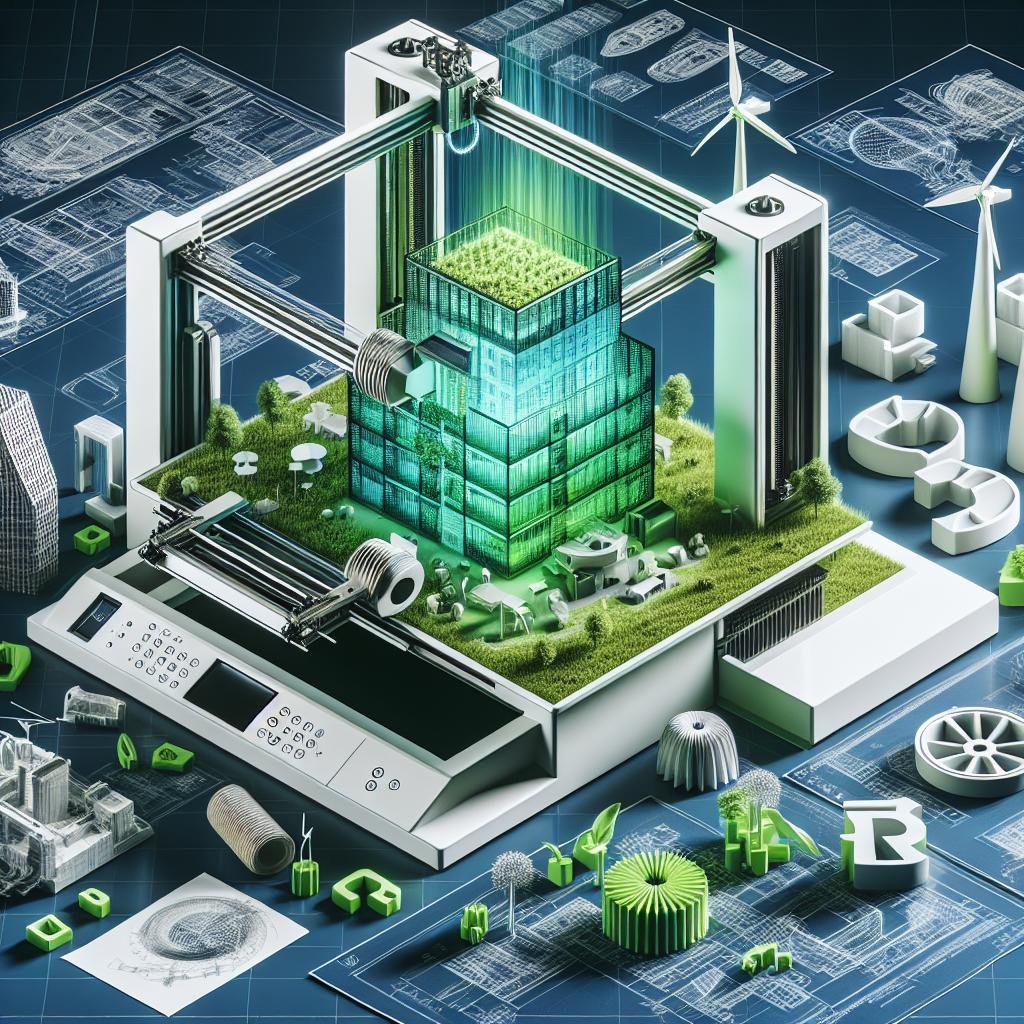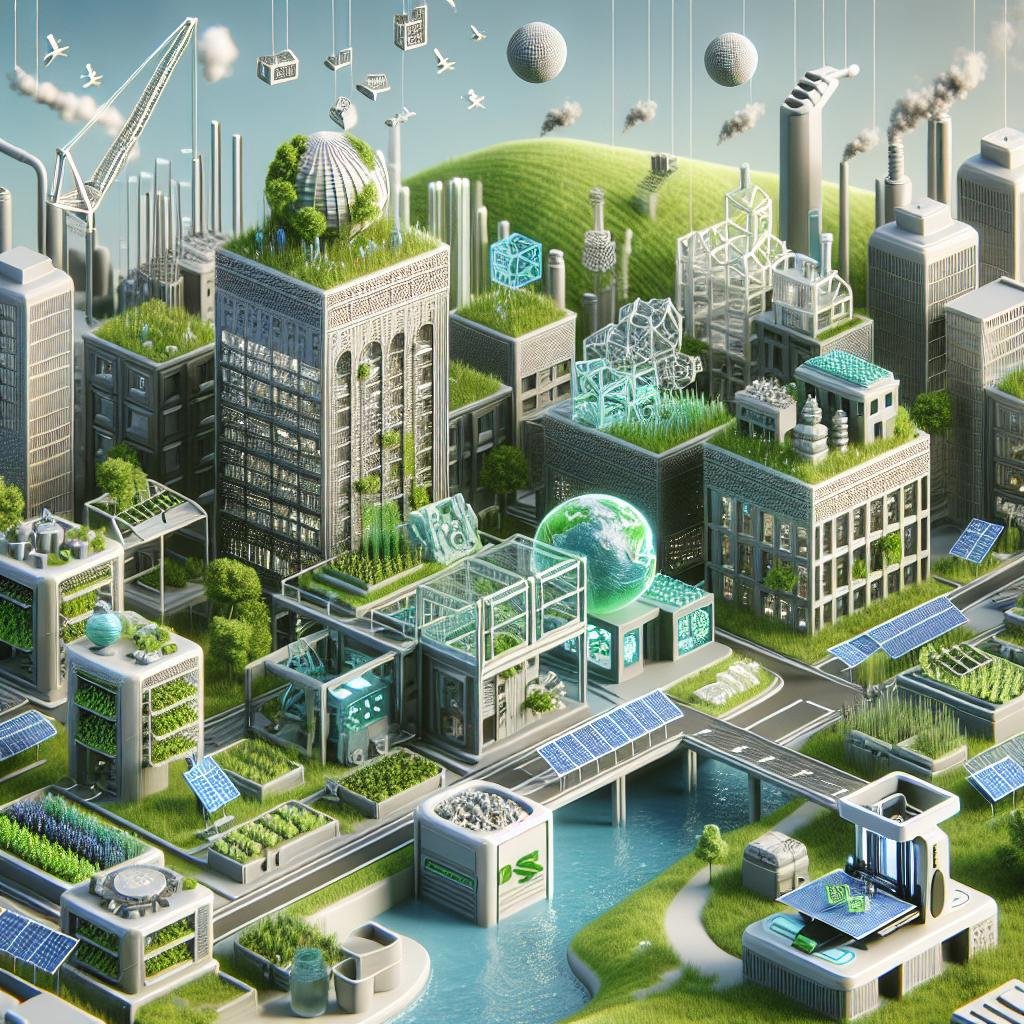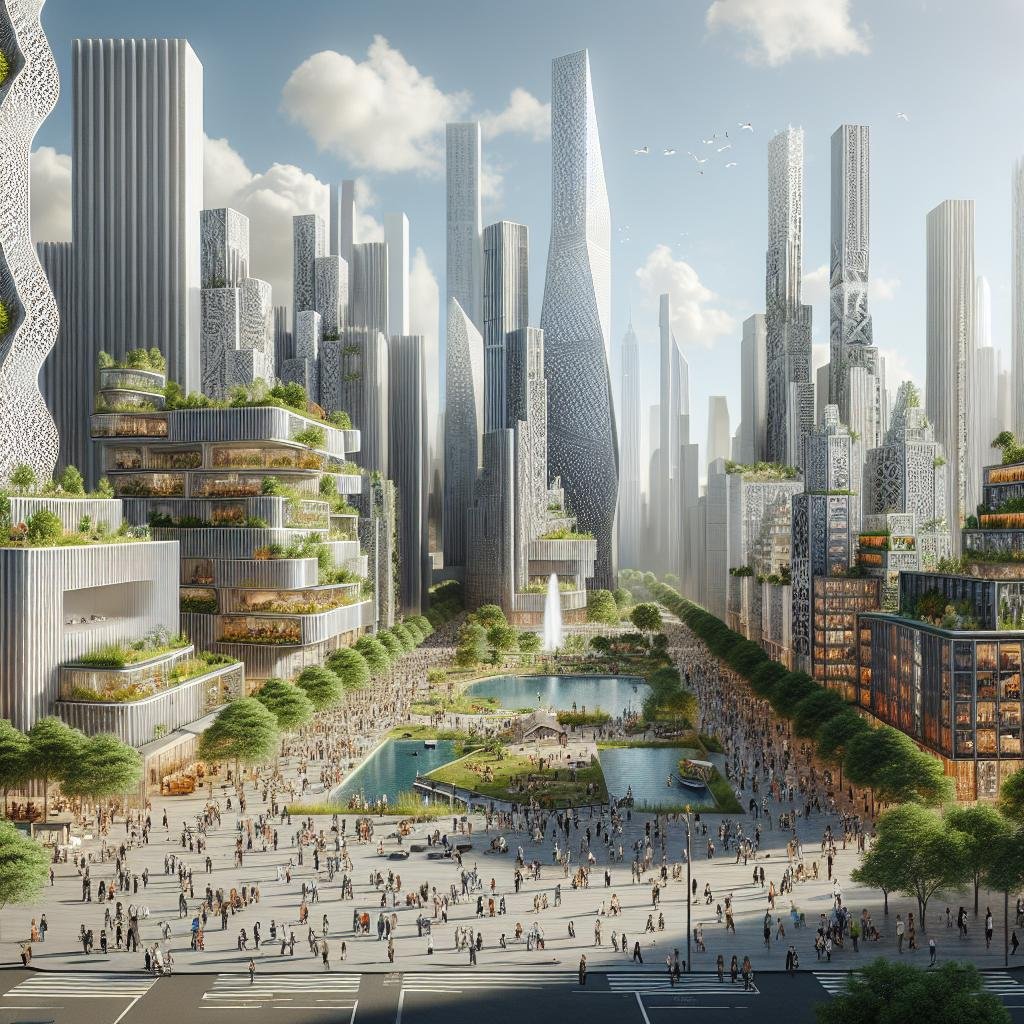In the heart of our bustling cities and sprawling suburbs, a quiet revolution is taking shape: buildings born not from the mindless thrum of a factory line, but from the elegant whispers of a 3D printer. Imagine structures rising gracefully as giant, mechanical hands weave dreams layer by layer - creations that echo both artistic vision and ecological mindfulness. This is the enchanting world of 3D printing in lasting architecture, where innovation marries environmental stewardship. As architects around the globe wield this transformative technology, they’re crafting not only the homes of tomorrow but also leaving a gentler footprint on the Earth. Dive with us into this exciting realm and discover how this modern alchemy is shaping a more sustainable future,one printed layer at a time.
Harnessing Innovation to Build Green: 3D Printing’s Promise
As we step into a future defined by technological advances and environmental awareness, 3D printing emerges as a transformative ally in the fight against climate change.This cutting-edge technology offers a plethora of solutions to reduce construction waste, lessen carbon footprints, and create eco-pleasant buildings. Imagine a world where homes and structures are conjured layer by layer, reducing the need for transportation of materials and minimizing leftovers that clog our landfills.Structures can be designed with intricate geometries to optimize natural light and ventilation, effectively slashing energy usage. The palette of materials, from organic concrete to recycled plastics, further elevates the potential for sustainable designs, paving the way for less resource-dependent constructions.
The precision and versatility of 3D printing unlock a realm of possibilities in eco-conscious architecture. Architects and builders are no longer bound by the rectilinear confines of traditional construction.Here’s how 3D printing contributes to sustainability:
- Material Efficiency: Considerably reduces waste, utilizing only the necessary materials for structural integrity.
- Localized Production: Structures and components can be printed on-site, minimizing transportation and emissions.
- Innovative Designs: Facilitates the creation of complex structures that would be arduous or unachievable with conventional methods.
| Aspect | 3D Printing Benefits |
|---|---|
| Speed | Reduces construction time significantly |
| Customization | Allows unique, tailor-made solutions for every project |
| cost | Lowers labor and material costs |

From Blueprints to Eco-Friendly Realities: How 3D Printing Reshapes Design
Imagine a world where creating a house produces minimal waste,incorporates eco-friendly materials effortlessly,and adapts to complex design changes without the typical delay or cost. This is the evolving promise of 3D printing in the realm of sustainable architecture. With 3D printing, architects can transform digital blueprints into tangible, eco-conscious structures. This technology allows for the utilization of recycled materials such as plastics and composites that reduce the carbon footprint during construction. As the process requires fewer resources, it not only minimizes waste but also curtails the energy use traditionally associated with construction. The use of 3D printing also promotes circular economy principles, enabling buildings to be adapted, reshaped, or repurposed rather than demolished.
Here’s how 3D printing is making waves in sustainable design:
- Material Efficiency: Utilizes only the necessary amount of material, reducing excess.
- Customization: Allows for tailored designs that maximize natural light and ventilation.
- Energy Saving: Significantly cuts down on energy consumption during manufacturing processes.
Moreover, architects are increasingly using 3D printing to pioneer innovative architectural forms and processes that blend aesthetics with environmental obligation. Below is a comparative table highlighting traditional and 3D printed construction advantages:
| Traditional construction | 3D Printed Construction |
|---|---|
| High material waste | minimal material waste |
| Long construction timelines | Speedy project completion |
| Limited design flexibility | Customizable and intricate designs |
In this exciting intersection of technology and sustainability, 3D printing stands as a keystone in reimagining architecture that is not only bold in design but gentle on the planet.

Beyond concrete and Steel: Sustainable Materials in 3D architecture
In the quest for sustainability, the traditional reliance on concrete and steel is being challenged by innovative and environmentally friendly materials. 3D printing stands at the forefront of this revolution, introducing an array of new materials that are not only strong and durable but also less taxing on the environment. One captivating advancement is the use of bio-plastics, derived from natural sources like corn and sugar cane, which offer an eco-friendly alternative to petroleum-based plastics. Moreover, recycled materials are becoming increasingly elegant, allowing construction with elements that were once destined for landfills. These new materials, when skillfully crafted using 3D printing technology, can create complex architectural forms that were previously unimaginable, paving the way for structures that respect and coexist with natural ecosystems.
Beyond the adoption of innovative materials, 3D architecture equally emphasizes the efficient use of resources. The additive manufacturing process employed in 3D printing minimizes waste, as materials are added layer by layer, precisely where needed. Additionally, the growing trend toward local sourcing of materials further reduces the carbon footprint of construction projects. The collaborative interplay between technology and material science enables architects to redefine the boundaries of what’s possible, offering not just visually striking designs but also contributing to a sustainable future. Check out these intriguing sustainable materials being used in 3D architecture:
- Mycelium Composites – Biodegradable and lightweight.
- Hempcrete - Known for its insulation properties.
- PLA Bioplastics – Made from renewable resources.
| Material | Features |
|---|---|
| Mycelium composites | Grows naturally, sustainable and biodegradable |
| Hempcrete | Non-toxic, high thermal mass |
| PLA Bioplastics | Derived from corn starch, compostable |

Crafting a Greener future: Practical 3D Printing Strategies for Architects
As architects strive to design structures that not only inspire but also respect our planet, integrating 3D printing technology has emerged as a game-changer. This innovative approach enables the use of sustainable materials, allowing architects to minimize waste and capture the essence of eco-friendly designs. By employing a wide range of natural and recycled materials like biodegradable polymers and recycled plastics,architects can turn what was once waste into functional building components. This shift does not merely cut down resource consumption but also showcases the potential to embrace circular economy principles in architecture.
- Utilizing local materials to decrease transportation emissions
- Employing biodegradable polymers and recyclable materials
- Designing for disassembly to facilitate reuse and recycling
Moreover, 3D printing enables precision and customization, aiding architects in creating intricate designs without needless excess. With the help of advanced software, designers can optimize structures to use fewer resources while maintaining architectural integrity and aesthetics. Consider the benefits of unique architectural components produced on-demand,reducing inventory and storage needs-an ideal scenario facilitated by 3D printing. In the practical application within the field, architects and designers can see how small-scale projects are taking a greener path through this technology.
| 3D Printing Benefits | Environmental Impact |
|---|---|
| Custom design Flexibility | Reduced Material Waste |
| Local Material Usage | Lower Carbon Footprint |
| On-Demand Production | Minimal Storage Requirements |
Q&A
Q&A: The Role of 3D Printing in Sustainable Architecture
Q1: Why is 3D printing gaining so much attention in the field of sustainable architecture?
A1: Imagine crafting a building as if you were playing with a giant, eco-friendly Lego set. That’s the magic of 3D printing! It’s making waves as it allows architects to design and build structures with minimal waste, using eco-friendly materials. By precisely depositing only what is needed, it reduces excess material use, cutting down on both the footprint and the time to create sustainable, resilient buildings.
Q2: What materials are used in 3D printing for sustainable construction?
A2: Great question! In sustainable 3D printing, we’re seeing a shift towards biodegradable and recyclable materials. Think along the lines of bio-concrete, recycled plastics, and even innovative mixes containing hemp or bamboo. Some adventurous projects have even used soil,allowing buildings to blend beautifully into their natural surroundings. The aim is to reduce dependence on traditional, resource-heavy materials while ensuring durability and energy efficiency.
Q3: How does 3D printing contribute to energy efficiency in buildings?
A3: Ah, the beauty of 3D printing in architecture is not only skin deep! These structures can be designed with integrated energy-saving features. For example, we can create walls with built-in insulation or innovative designs that optimize natural light and ventilation.This technology allows for an efficient layering process that enhances thermal performance, significantly reducing energy consumption for heating and cooling.
Q4: Can 3D printing help make architecture more accessible and affordable?
A4: Absolutely! Here’s where the heart of sustainable architecture realy beats. 3D printing streamlines the construction process, cutting labor costs and reducing build times dramatically. Not to mention, it can utilize local materials, saving on transport costs. This means creating affordable, quality housing quickly, which is crucial for addressing the global housing crisis. So, it’s not just about being green; it’s about making green living available to everyone.
Q5: Are there any real-life examples where 3D printing has been successfully implemented in sustainable architecture?
A5: Indeed,there are some fantastic real-world instances! Take,for example,a community in Mexico that employed 3D printing to create affordable homes for families in need. Or,the collaboration in the Netherlands that’s developing floating homes,perfect for rising sea levels,all created with 3D-printed concrete. These projects showcase the versatility and potential of 3D printing to revolutionize how we think about sustainable living spaces.Q6: What challenges does 3D printing face in sustainable architecture?
A6: Like every superhero technology, 3D printing isn’t without its kryptonite.challenges include the high initial setup costs for 3D printers and the current limitations in printable building sizes. moreover, there’s a learning curve associated with designing structures specifically for 3D printing.However,with innovation and collaboration,these hurdles are slowly being overcome,and the future looks promising!
Thanks for joining us on this journey into the fascinating world of 3D printing and sustainable architecture. As technology continues to evolve,so too does our ability to build a greener,more sustainable world-one layer at a time!
Insights and Conclusions
As we stand on the cusp of a new era in sustainable architecture,3D printing emerges not just as a tool,but a catalyst that transforms our dreams of an eco-friendly future into tangible reality.Its potential to reshape how we conceive, design, and construct our built environment is not just exciting-it’s essential. By weaving efficiency with creativity, 3D printing doesn’t just promise a future where our buildings are kinder to the planet; it makes that future accessible, scalable, and wonderfully imaginative. As we embark on this journey, let us envision cities that live and breathe in harmony with nature, guided by the endless possibilities that this revolutionary technology offers. Here’s to a world where walls become words, structures tell stories, and every edifice speaks the language of sustainability.As our narratives continue to unfold, let 3D printing inspire us to build not just structures, but legacies, one layer at a time.

